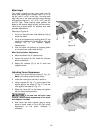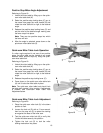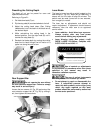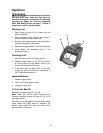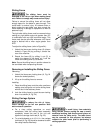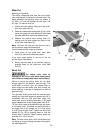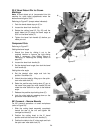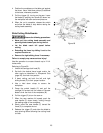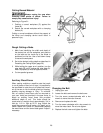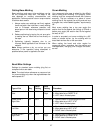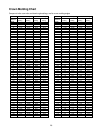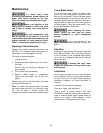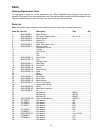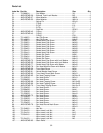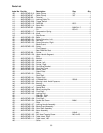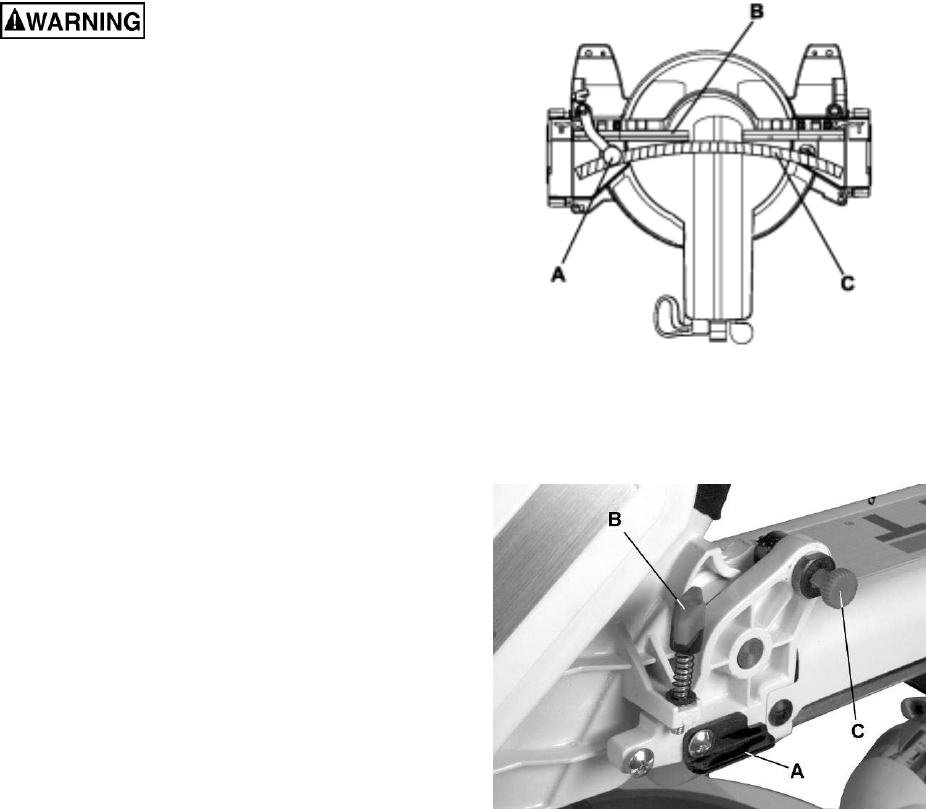
26
Cutting Bowed Material
Always unplug the saw when
removing small pieces of debris. Failure to
comply may cause serious injury!
Referring to Figure 31:
1. Position a curved workpiece (C) against the
fence (B).
2. Secure the curved workpiece with a clamping
device (A).
Cutting a curved workpiece without the support of
the fence and clamping device could result in
personal injury.
Rough Cutting a Dado
1. Mark lines identifying the width and depth of
the desired cut on the workpiece and position
on the table so the inside tip of the blade is
positioned on the line. Use a hold down clamp
to secure the workpiece.
2. Set to the desired cutting depth as described in
Presetting the Cutting Depth (page 20).
3. While holding the upper arm in position, turn the
stop knob (B) until it touches the stop plate (A).
Note: Stop plate (A) must be flipped to the left.
4. Cut two parallel grooves.
Auxiliary Wood Fence
When making multiple or repetitive cuts that result
in cut-off pieces of one inch or less, it is possible for
the saw blade to catch the cut-off piece and throw it
out of the saw or into the blade guard and housing,
possibly causing damage or injury. To minimize
this, an auxiliary wood fence can be mounted to
your saw. Holes are provided in the saw fence to
attach an auxiliary wood fence (this provides
additional depth of cut). This fence should be
constructed of straight wood approximately 3/4 in.
thick by 1-1/2 in. high by 22 in. long. Attach the
wood fence securely and make a full depth cut to
make a blade slot. Check for interference between
the wood fence and the lower blade guard. Adjust if
necessary.
Figure 31
Figure 32
Changing the Belt
1. Unplug your saw.
2. Loosen the bolts and remove the belt cover.
3. Turn the screw counterclockwise with a hex
wrench to move the motor forward.
4. Remove and replace the belt.
5. Turn the screw clockwise with a hex wrench to
move the motor back. Do not over tighten.
6. Replace the belt cover and tighten the bolts.



